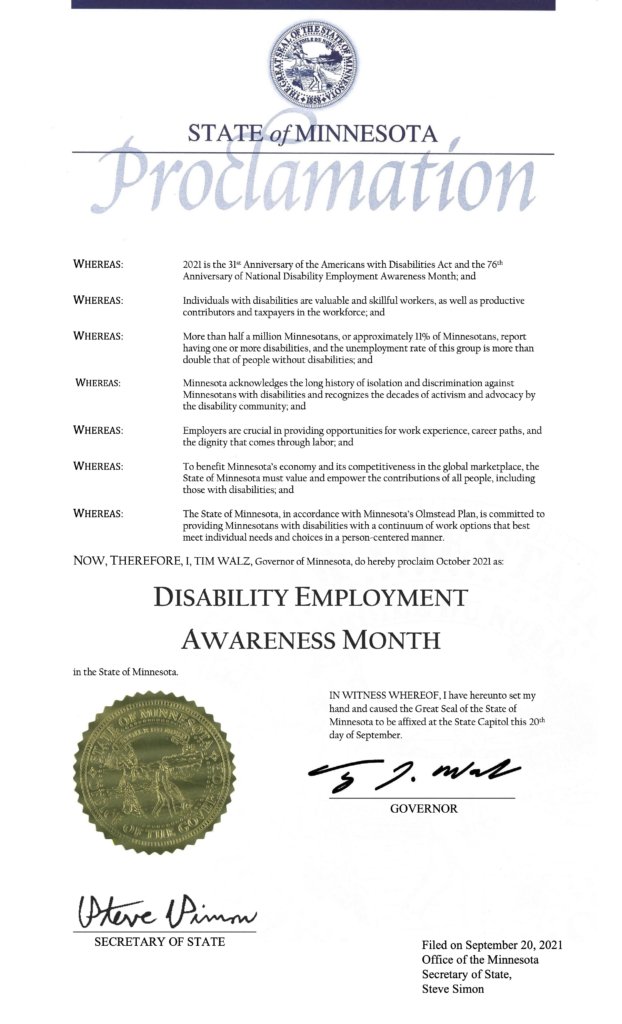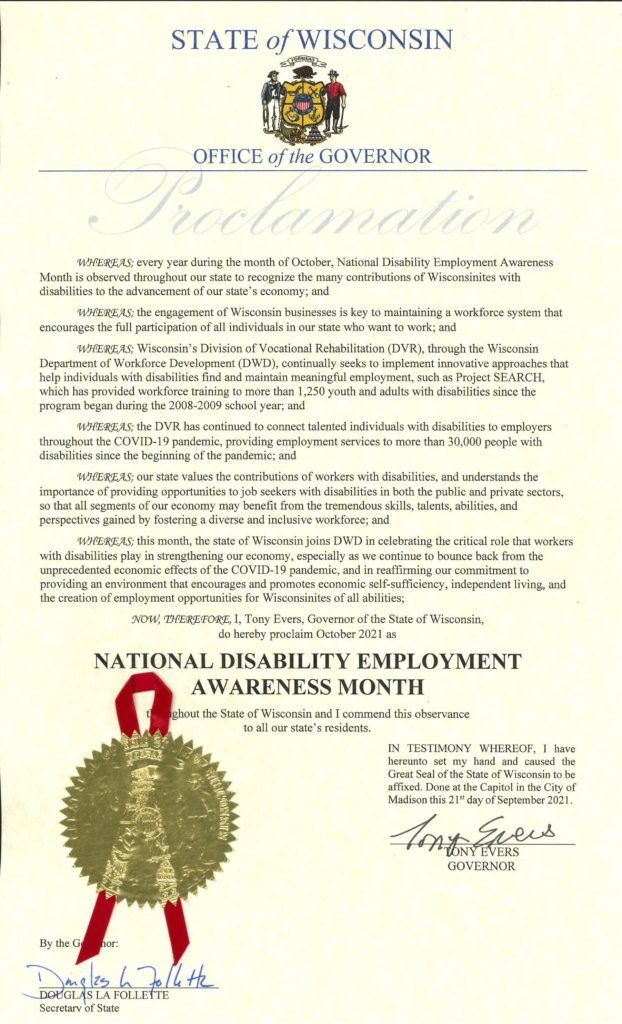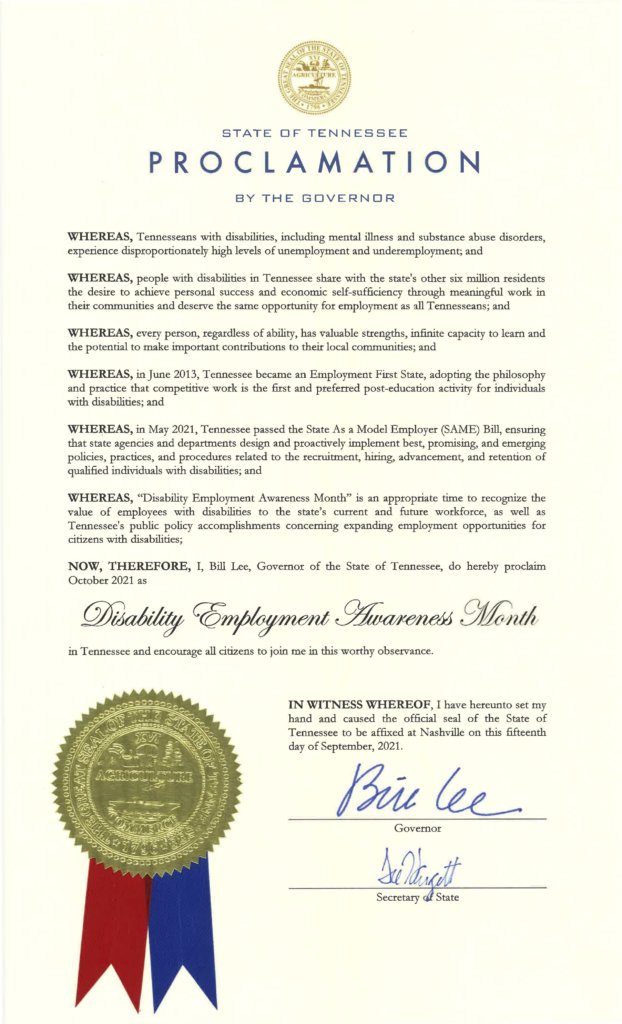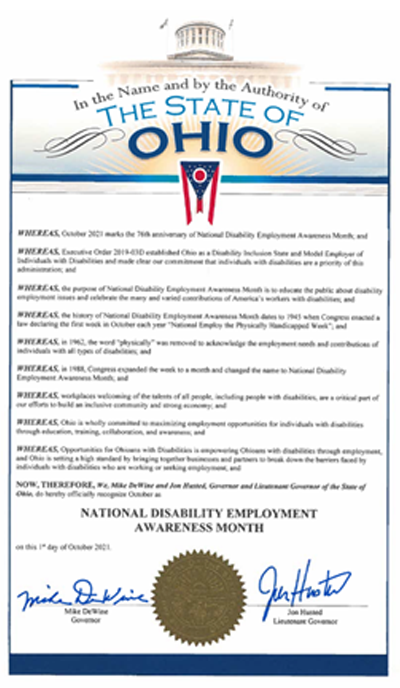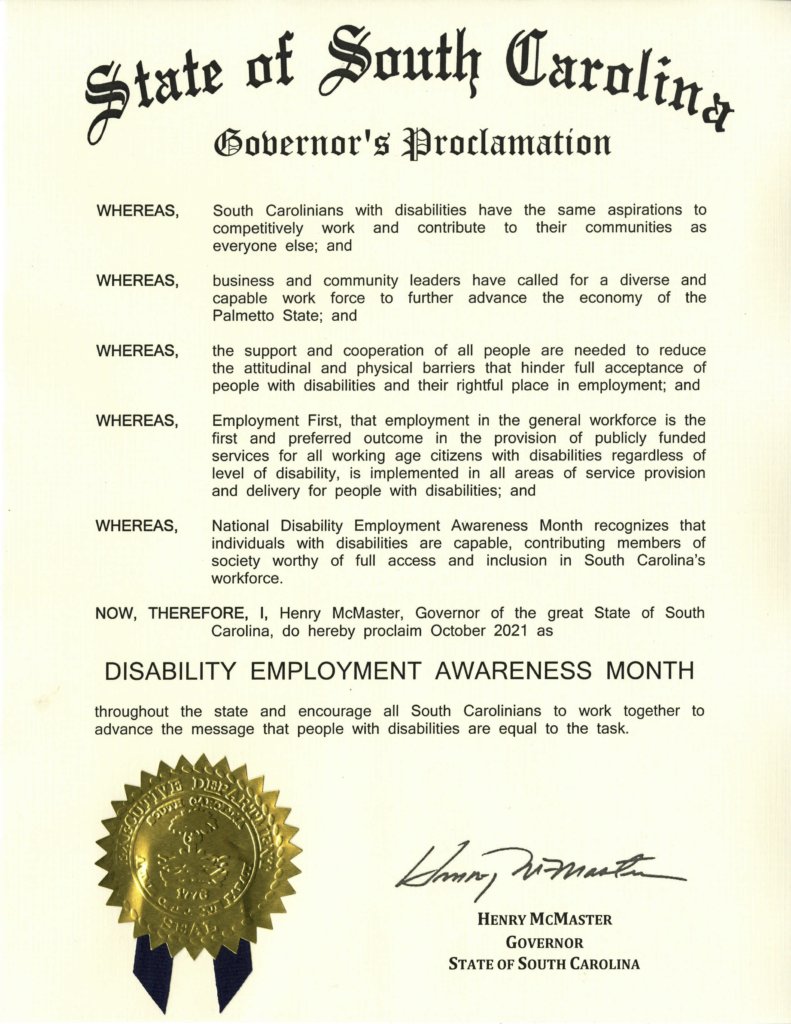Raleigh, NC, October 8 – North Carolina must “increase opportunities for fair wages, career employment, and economic self-sufficiency for individuals with disabilities,” said Governor Roy Cooper in a proclamation marking October as Disability Employment Awareness Month.
Gov. Cooper also recommitted to “transforming state government into a model employer of people with disabilities” according to Executive Order No. 92. The order announced North Carolina as “an employment first state,” and promised North Carolinians with disabilities further access to employment, internship opportunities, job development, transition programs, and support services through the state’s vocational rehabilitation divisions and services for the blind within the Department of Health and Human Services.
These are important public commitments for the more than 682,617 working-age people living with disabilities in the Tar Heel State. In the economic expansion prior to the COVID-19 pandemic, North Carolina had a 35.3 percent disability employment rate. By contrast, people without disabilities had an employment rate of 77.4 percent. That means that there is a 42-percentage point gap in labor force participation rates between people with and without disabilities. [continue reading…]





